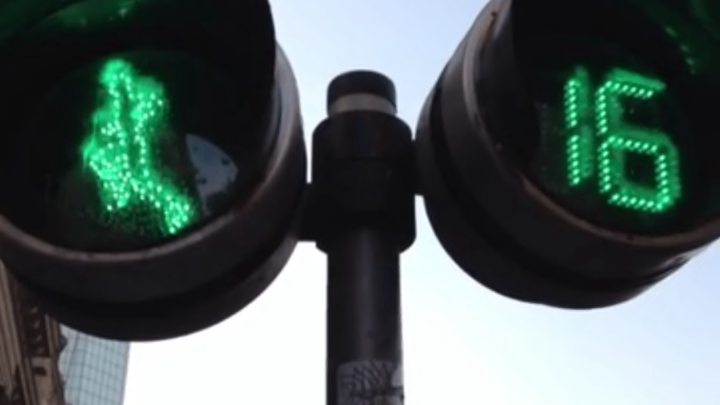The United States ranks 24th in the world in literacy, 54th in education expendature, and 31st in student proficiency in science, but we are worryingly falling behind where it really matters: pedestrian crossing traffic signals.
Half a century ago, America pioneered the use of these lights and was at the forefront of ped-crossing technology. The future was exciting—or, at least, it should have been.
Today, if you visit an American city, you will probably see a boring pedestrian signal with a static little man telling you to walk and then a big red blinking hand letting you know when to stop (and maybe a countdown timer, if you're lucky). Meanwhile, in countries like Thailand, Peru, and beyond, their pedestrian lights are visual feasts. These LED miracles display animated little green figures who actually walk when you're supposed to cross, and then run when it comes time to hurry up.
I won't mince words: These international pedestrian crossing lights are making America look like losers on a global scale. To see what I mean, check out these nine examples below. Some are the same make and model of signal, but they are all set to different speeds, giving each little green figure his or her own personality and walking style.
1. Egypt
*
Walking Style: Ric Flair's Strut.
2. Peru
*
3. Walking Style: Little Cliffhanger guy from the Price is Right.
4. Bangkok, Thailand
*
Walking Style: Tin Man from The Wizard of Oz.
5. Mexico City, Mexico:
*
Walking Style: Kramer dressed as a pimp.
6. Santiago, Chile:
*
Walking Style: Tom Cruise sprinting.
7. Manila, the Philippines:
*
Walking Style: John Wayne.
8. Cambodia:
Walking Style: Pat Benatar and her crew at the end of the "Love is a Battlefield" video.
9. Guangdong, China
*
Walking Style: Classic Chaplin.
Bonus: Las Vegas:
*
For a while, it looked like America was catching up. The above lights, which were in Las Vegas, featured ominous, shifting eyes which either told you to look both ways or, if you are an F. Scott Fitzgerald scholar, represent the decay of American society in the 1920s. According to commenters on the YouTube video, however, these kinds of lights were deemed ineffective and have since been removed.
